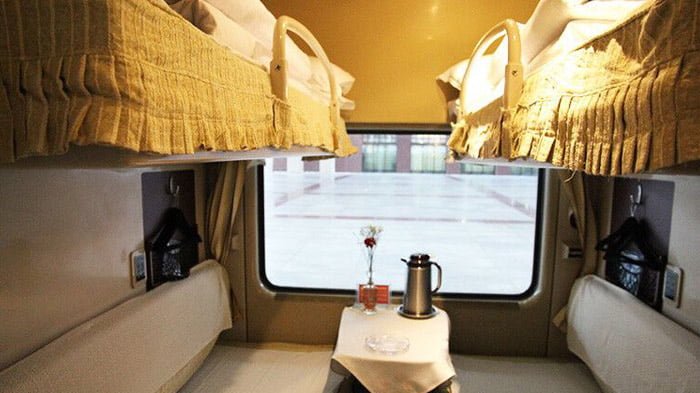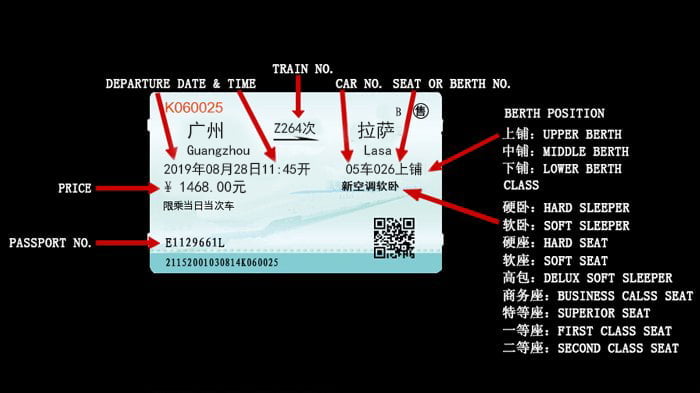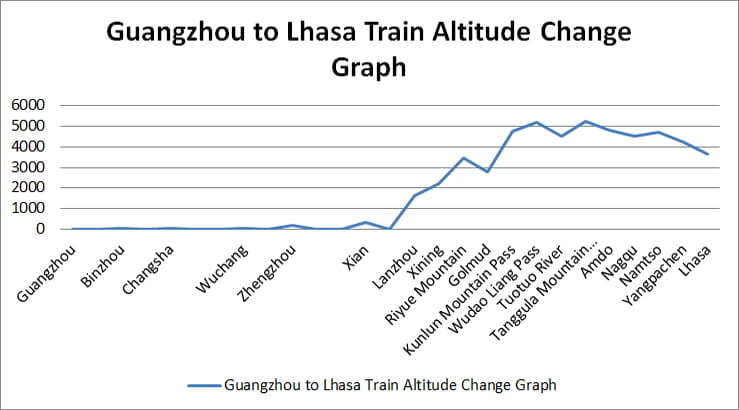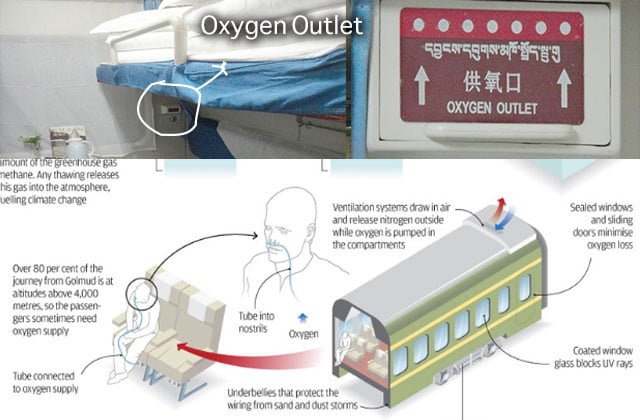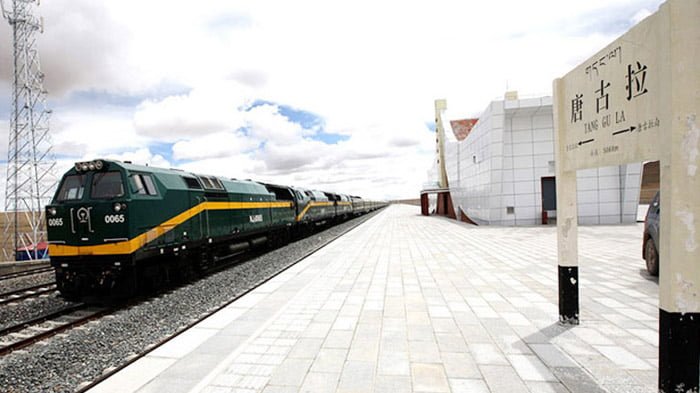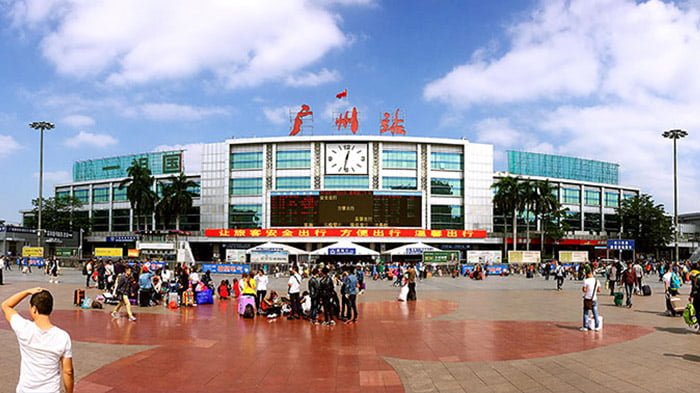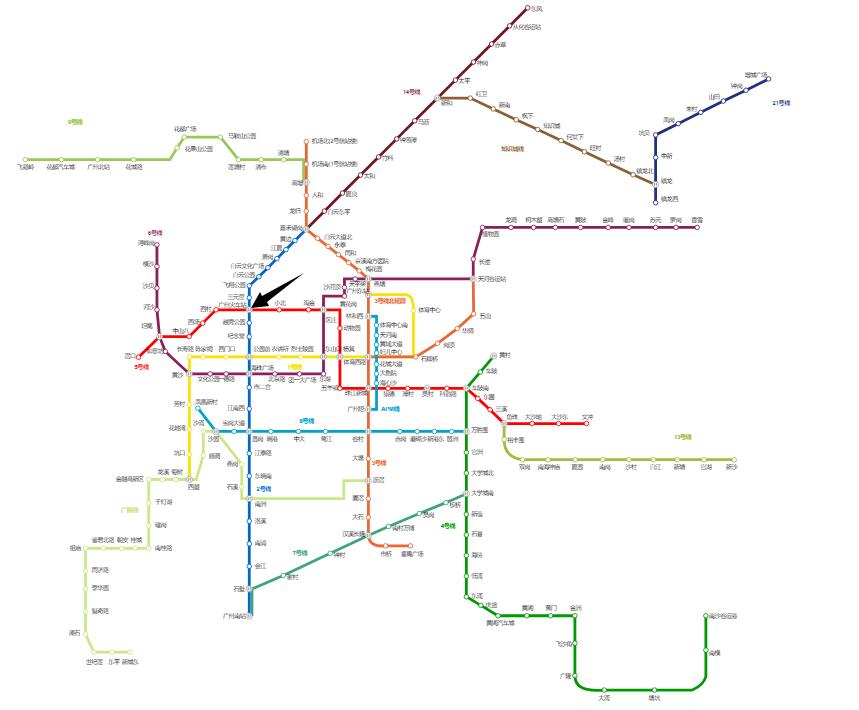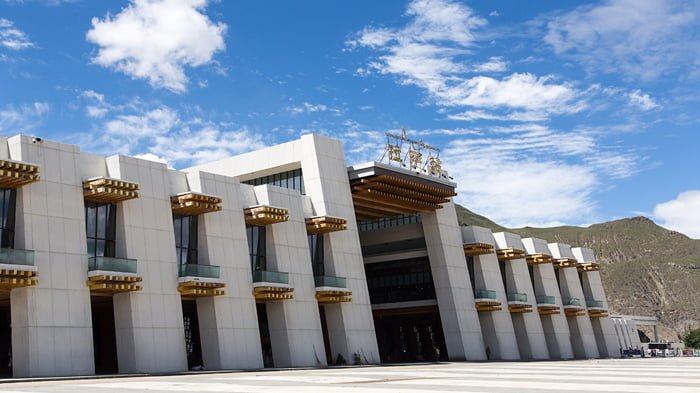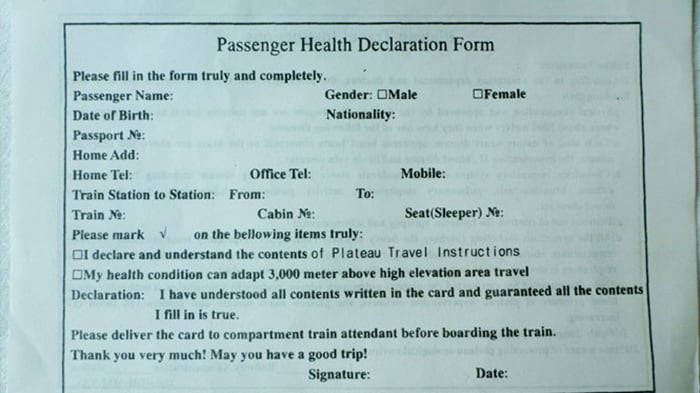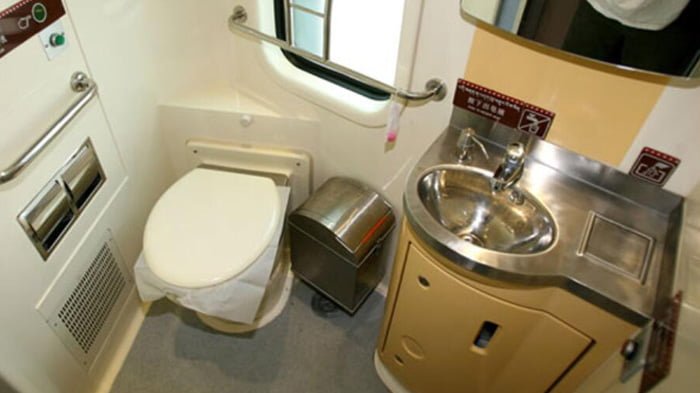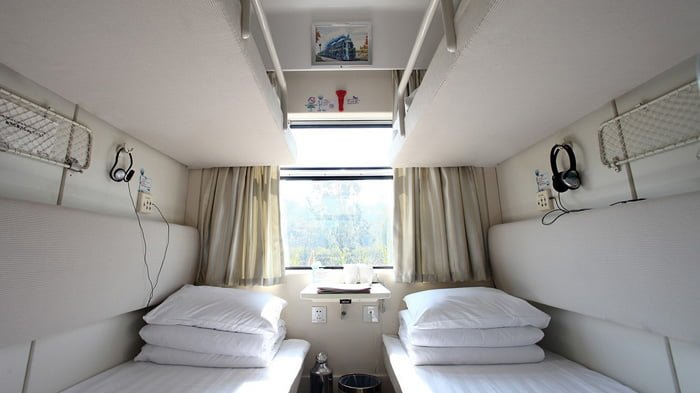Guangzhou to Lhasa Train Z264 departs daily at 11:45 from Guangzhou Railway Station and arrives at Lhasa Railway Station at 16:45 on the third day after 53 hours, covering a distance of 4,980 kilometers and being the longest railway route to Lhasa. Made its debut in July, 2006, Guangzhou Lhasa train’s operational speed is also 120 km/h.
Guangzhou is the capital and most populous city of the province of Guangdong in southern China. Guangzhou has a history of over 2,200 years and was a major terminus of the maritime Silk Road, and continues to serve as a major port and transportation hub, as well as one of China’s three largest cities.
It would be a great choice for tourists who love taking the long train journey because the railway route allows them to enjoy the various landscape from southern to northern China, as well as a span from the most modern and developed regions to the most barren lands.
How to Choose the Sleeper Type?
Soft Sleeper is More Suitable than Hard Sleeper
Like each Lhasa-bound train, the train to Lhasa from Guangzhou is also specially built for the high altitude environment and equipped with advanced facilities, including air-conditioning, supercharging system, oxygen supply, altitude display, etc. The train is also tightly sealed so as to firstly keep the inside air pressure normal and secondly prevent passengers from littering. Besides, all the carriages are installed with double-pane windows and ultraviolet filters to protect passengers from ultraviolet radiation. Nowadays, taking Tibet train to Lhasa is extremely popular for the breathtakingly unique scenery along the railway from Guangzhou to Tibet, the Qinghai-Tibet Railway in particular.
Guangzhou to Lhasa Train journey is the longest one among several train lines from inland China to Tibet, it takes at least more 12 hours longer than others. Thus, Soft sleeper is the best choice for your Guangzhou Tibet train tour.
There are 4 berths in each soft sleeper compartment
A soft sleeper compartment is equipped with 4 berths, while a hard sleeper compartment has 6 berths. Beds of hard sleepers are 60cm wide and 180cm long, making it difficult for passengers of the middle and upper berths to sit straight, while soft berth is 75cm wide and 190cm long, more spacious and more convenient to climb up and down.
Each soft sleeper compartment is equipped with a sliding lockable door to keep the noise and peep from the aisle, providing more privacy and quietness. There is no door for the hard sleeper compartment and it is semi-open to the aisle day and night.
Soft sleeper is more suitable for a trip as long as 53 hours as it gives more privacy and is helpful for a sound sleep. And it is the longest distance that makes less popular than other trains to Tibet, and comparatively it is easier to book the soft sleeper ticket.
Alternative Plans for Guangzhou Lhasa Train Trip
Most travelers can not bear such a long journey and choose to fly to Xining (the starting point of Qinghai Tibet Railway, which is only 24 hours train ride to Lhasa), then transfer to Xining-Lhasa train to enter Tibet.
Actually, Xining to Lhasa is the real Tibet train with the highest railway on the world. It takes 21 hours to arrive in Lhasa from Xining by train and the trains normally start from late afternoon, giving visitors a longer time to enjoy the scenery from Golmud to Lhasa. You can also choose to stay in Xining (2,200 meters above sea level) for several days to visit the famous Kumbum Monastery and Qinghai Lake, and acclimatize yourself to the high altitude.
About ticket price:
The ticket prices above are the net price. In reality, as traveling to Tibet is so popular that the actual ticket demand far exceeds the supply, in-bound and out-bound tourists have to pay more than the net price to buy tickets. The actual price is subject to the market fluctuation. In some cases, the actual price could be double than the net price. Despite the uncertainty and difficulty in purchasing train tickets, Tibet Vista would manage to book tickets at a reasonable price (usually 20 percent lower than the market price) and promise to offer free service for it. If tourists only want to buy train tickets via Tibet Vista without intending to travel to Tibet, Tibet Vista will have to charge a small amount of service fee.
How to Book and Get Tibet Train Tickets?
International travelers can’t enter in Tibet as backpackers and need the help of travel agency to apply for Tibet Travel Permit in advance. You do not need the permit to book the tickets but you do need it to collect the ticket and board the train.
1. How to Book Tibet Train Ticket?
Generally speaking, there are three major ways for international travelers to book train tickets in China.
1. Book tickets with us
2. Buy tickets at a train station
3. Book online at 12306.cn (China Railway Official Website)
Rail transport is an important mode of long-distance transportation in China. Usually most train tickets can be booked around 30 days before departure. However, getting a ticket for popular routes such as Guangzhou to Lhasa train is not easy especially in peak season or when your departure date coincides with a Chinese festival or the begging/ end of students’ winter or summer holiday.
With more than ten-year experience in Tibet traveling, we have train ticket experts who can communicate with you in English and book the tickets for you as soon as reservations open. Just send us your departure date and copy of the passport, we will book the ticket and save the time and hassle for you. What’s more, we can deliver the paper tickets to your hotels in China and provide bilingual support for your boarding on train.
Buying tickets at train stations is difficult for international travelers because the staff there don’t understand English and not all information displayed is in English and Chinese. Booking at 12306.cn is more difficult because it only uses Chinese language and accepts only Chinese bank card, Wechat Pay and Alipay.
2. How to Get the Tibet Train Ticket?
In China, you need the paper train tickets to get into your train. If you book train tickets with us, you have two ways to get your paper tickets:
1. We deliver the paper tickets to your hotel or address in China (Recommended)
2. Collect them at the railway station
If you choose the delivery service, it is advisable to inform us 4 business days before departure. If you choose to collect them at the railway station, make sure to bring the confirmation number of train tickets, your Tibet Travel Permit as well as your valid and original passport. The confirmation number will be sent to you along with related train information once the tickets are confirmed, present it and the mentioned documents to the staff behind ticket windows to get paper tickets for free.
Guangzhou Railway Station operates 24/7, but usually there are only a few ticket windows available after 11 p.m. Considering the long queues in front of the ticket window and the language barrier, it is advisable to arrive at the train station at least 2 hours before departure if you collect tickets on the same day.
3. How to Read the Train Ticket
Here are some useful phrases you may need to read Z264 Guangzhou to Lhasa Train ticket:
广州站:Guangzhou Railway Station
拉萨站: Lhasa Railway Station
xx年xx月xx日: xx Year xx Month xx Date
xx车xx号: xx Carriage xx Berth
上/ 中/ 下铺:Upper/ Middle/ Lower Berth
Information guide on Guangzhou to Tibet Train Ticket
How to Board the Train?
Below are the steps to board a train in China:
Step1: Fill the Health History Form
Before boarding the train, tourists are expected to fill out an health history form. If one has illness such as hypertension, stroke, chronic respiratory problem, and other cardiovascular disease, he or she shall no board the train for one’s health concern.
Step2: Pass Security Check
After your arriving at the right railway station, line up for the security check to enter into waiting hall: present your passport, Tibet Travel Permit and train ticket to the staff, put all your luggage such backpacks, carry-on bags on the security scanner conveyor belt, and walk through a detector gate and wait for staff to use a scanner on you to check forbidden articles.
Step3: Find the Waiting Room
Once enter into the waiting hall of Guangzhou Railway Station, you can find an LED screen showing Train Number (车次), Terminal (终到站), Departing Time (开点) and Waiting Room (候车室). Get your waiting room information and wait for check-in there. Train number Z264 is well marked in the correct waiting room.
Step4: Board the Train
Usually check-in starts 15-30 minutes before departure and barriers close 5 minutes before departure. After check-in, you can find Led screen hang on the way to the train telling your platform (站台) and direction of your carriage (车厢). Follow the instruction and the staff waiting at the carriage gate will check your ticket again to make sure you board the right carriage of the right train.
Step5: Find Your Berth
After getting on the train, you can find your berth according to your ticket. Put your baggage on the rack overhead or under the lower berth. Your sleeper ticket will be exchanged for a plastic berth card by staff shortly after boarding. Staff will return your ticket and get back the berth card about half an hour before arriving at your destination.
FAQs:
Q1. Is it necessary to carry Tibet Travel Permit all the time?
Make sure you have your passport, Tibet Travel Permit and ticket with you as you could be checked many times during the long journey. It is also advisable to have many copies of Tibet Travel Permit.
Q2. Is it possible to swap ticket with other people to stay with friends or family in the same cabin?
Yes. It is acceptable. You may ask conductor to swap tickets with other passengers to stay with your family or friends. Do remember your cabin and seat No.
Q3. Is It Safe on the Tibet Train?
Having a ride on Qinghai-Tibet train is relatively safe as each compartment is independent and its door will automatically be closed at night. One is forbidden to enter the compartment without ticket. Of course, nowhere is safer than the compartments of soft sleeper. The cabin of soft sleeper can accommodate 4 travellers and there is a door to shut, which is the perfect choice for a family. Besides, the surveillance cameras and 24-hours police patrol make it even safer on the train.
Life Onboard
Having a ride on Qinghai-Tibet train like Guangzhou-Lhasa route is definitely the experience of a lifetime. Besides, the long distance and pressurized train tailor-made for acclimatization of extreme altitude make the ride different from other train journey. Following tips are suggested for tourists to better enjoy the life on Guangzhou-Lhasa train.
1. Food and Drinks
Before the departure from Guangzhou Railway Station, do bring enough food. It could be snacks, fruit and instant noodles wrapped in bowls. Sharing snack with roommates is the easiest way to break the silence.
Dozens of tourists are having dinner in the dinning car. Tourists can order some traditional Chinese home-made dishes.
You can get 3 meals and drinks from the dining carriage located in the middle of the train. Usually only Chinese food such as noodles, dishes and soups is available and it costs about 20 CNY/meal and accepts cash payment, Wechat payment and Alipay.
The trolleys loaded with food are served in each compartment sporadically and tourists can buy from the staff of train. Besides, tourists can get free boiled water from hot water dispenser near the sinks.
2. Facilities on the Train
Toilets: The soft sleeper carriage has one western-style toilet and one squat style toilet, while hard sleeper carriage only has two squat style toilets. Toilets are located at the end of each carriage, adjacent to the washbasin, dustbin and hot water dispenser. The toilets will be locked when the train stops. Avoid to use them when the train is about to stop for arriving at a station. The red sign on the toilet door means the toilet is occupied while the green sign means not occupied. Next small but important thing is to have enough tissue or toilet paper. Because it is used fast and one won’t find any replacement if it runs out.
Washbasin: Usually only cold water is available. Tourists need to bring their own towel, wet paper tissue and toilet articles.
Dustbin: There is a big dustbin at the end of the carriage. And you can find small dustbin in each compartment and metal plate on the table along the aisle. A cleaner will sweep the floor and collect luggage from the compartment from time to time. All the waste will be disposed by train staff when arrive at stops along the way.
Hot water dispenser: There are free boiled water all the time. Bring your own water flask and get water when the light on the dispenser turns green.
FAQs:
Q1. Where to recharge your mobile phones and electronic devices?
The power plug for chargers are located in the corridors OR under your table in the cabin with the 4 soft sleepers (in between the 2 lower bunks).
Q2. Can tourists have shower in the train?
Unfortunately, there is no shower room in the train. Do bring some wet wipes in stores and a small towel. And small but equally important thing is to bring enough toilet/tissue paper.
3. Altitude Change of Guangzhou to Lhasa Train
This longest train journey takes 53 hours and 4,980km, staring from Guangzhou which altitude is only 10m, and rise up to the top high Tanggula Mountain Pass 5231m. It is really a big challenge for tourists.
At the beginning of the train trip, you will not feel the subtle altitude change between Guangzhou and Lanzhou. After Lanzhou, the altitude climbs slowly to 2,275 meters at Xining, which is the first station for a few passengers to feel the altitude sickness.
After Xining, the altitude starts to ascend and reaches 2,829 meters when arriving at Golmud at 2:20. Then the altitude increases sharply by more than 1,000 meters in less than 100 kilometers, causing altitude sickness for some passengers. When arriving at the world’ s highest railway pass, the Tanggula Pass (5,072m), most tourists will suffer from altitude sickness here. Then, the altitude drops slowly as you travel south through Nagqu and finally reaches 3,650 meters in Lhasa.
This graph gives you a rough idea of how altitude changes along Guangzhou-Lhasa railway line
4. Altitude Sickness and Oxygen Supply
Sometimes called “mountain sickness”, altitude sickness is a group of symptoms that can strike if you walk or climb to a higher altitude too quickly. Characterized by symptoms such as headache, dizziness, fatigue,nausea, altitude sickness is the biggest concern for travelling to Tibet.
However, there is no need to be panic about altitude sickness. To better adapt to high altitude, Guangzhou-Lhasa Train is tightly sealed and pressurized like an airplane. Therefore, smoking is not allowed. There are two sets of oxygen supply on the train: the dispersion-mode oxygen supply system operated by the train staff and the distribution-mode oxygen supply that can be connected to individual passenger through an independent port via a disposable pipe distributed by train staff. You can find the oxygen supply port in your compartment and along the aisle of each carriage.
An illustration of how to use oxygen outlet on Qinghai-Tibet train
As the train ascends to Golmud, the oxygen is automatically pumped into the train and tourists can also manually use the oxygen outlet to minimize altitude sickness symptoms such as headache, dizziness, fatigue,nausea,etc. It is advisable to bring altitude sickness medicines to ease the discomfort.
You can drink lots of water, eat light food and take a good rest to prevent high altitude sickness. It is advisable to consult the doctor for altitude sickness medicines weeks pior to the trip.
FAQs:
Q1. How to Get Help on the Train?
Some of the staff on the train speak English and they are easy-approaching and hospitable to foreign tourists. If one runs into any trouble, you may ask the head of conductor for help. Most of the passengers may have symptoms of altitude sickness (such as headache, fatigue, difficult sleeping, lack of appetite, etc.) as the train reaches Qinghai-Tibet plateau. Now, you may switch on the oxygen outlet to inhale oxygen to ease the discomfort. If the symptom gets worse, you may find the conductor for help and the doctor on the train will come and give you timely treatment.
Q2. How can we minimize the effect of altitude sickness?
The effect of altitude sickness on passengers varies. Yet, to minimize or ease the impact of altitude sickness, one may prepare some altitude sickness tablets before boarding the train and take some when the train climbs to plateau. There is no need to worry too much the altitude sickness, the train is built with oxygen supply system which is easy to use.
Q3. Is smoking allowed in the cabin?
Smoking is strictly forbidden in the train as the train is tightly sealed and pressurized and oxygen is pumped into the carriage when the train ascends to extreme altitude.It would be devastating if the train caught fire.
5. Views along Guangzhou-Tibet Railway
Just like the road trip by car, you could enjoy the scenery on both side of the road. The stunning scenery along the Guangzhou-Lhasa railway line will never let you down. As the train passes Xining and enters Golmud region, the breathtaking view appears one after another. Be sure to capture the memorable experience with your camera. Major attractions are Qinghai Lake, Yuzhu Peak, Kekexili Nature Reserve, Tuotuo He River, Tangula pass, Tsonag Lake, etc.
Tibetan antelopes running in the vast Kekexili Nature Reserve
With an altitude of 6178m, Yuzhu Peak is the summit of east part of Mt. Kunlun
Heading towards Tanggula Mountains Pass, the highest pass in the world
How to Get to the Train Stations?
Guangzhou Railway Station
There are five railway stations Guangzhou City, namely, Guangzhou East/ South/ West/ North Railway Station and Guangzhou Railway Station. Located in Yuexiu District, Guangzhou Railway Station, also known as “General Station” by locals, is the only station operating the train from Guangzhou to Lhasa. Passengers can arrive at Guangzhou Railway Station easily from downtown and Guangzhou Baiyun International Airport.
Address: Huanshi West Road, Yuexiu, Guangzhou, Guangdong, China
Phone: (86-20) 86661789, 61357222, 61346222
Ticket Booking Hotline: 12306
Distance from Airport: appro. 29.1km
Metro to There: Line 2, Line 3, Line 5
Guangzhou Railway Station
From Downtown to Guangzhou Railway Station
You can go to Guangzhou Railway Station by taxi or by Metro Line 2 or Line 5 directly.
Adjacent metro stations of Line 2: Yuexiu Park – Guangzhou Railway Station – Sanyuanli
Adjacent metro stations of Line 5: Xicun – Guangzhou Railway Station – Xiaobei
Guangzhou Metro Map
From Airport to Guangzhou Railway Station
By using the airport express way, it normally takes around 42 min to travel from Guangzhou Baiyun International Airport to Guangzhou Railway Station by taxi. Tourists can also get on Metro Line 3 at Airport South, get off at Jiahe Gangwang to transfer to Line 2 which arrives at Guangzhou Railway Station directly. While the subway takes longer time since each subway comes every 7 min.
Lhasa Railway Station
Lhasa Railway Station is the terminal of the Qinghai-Tibet Railway and serves as the central hub and biggest train station in Tibet for its huge transport capacity. Situated in Liuwu New Area of southwest Lhasa at an altitude of 3,641 meters, it is only 8 kilometers to downtown Lhasa, 20 kilometers to southwest of the Potala Palace.
When you arrive in Lhasa by train, our guide will greet you and bring you to start your once-in-a-lifetime trip to explore the mysterious Tibet – the roof of the world.
Lhasa Railway Station

